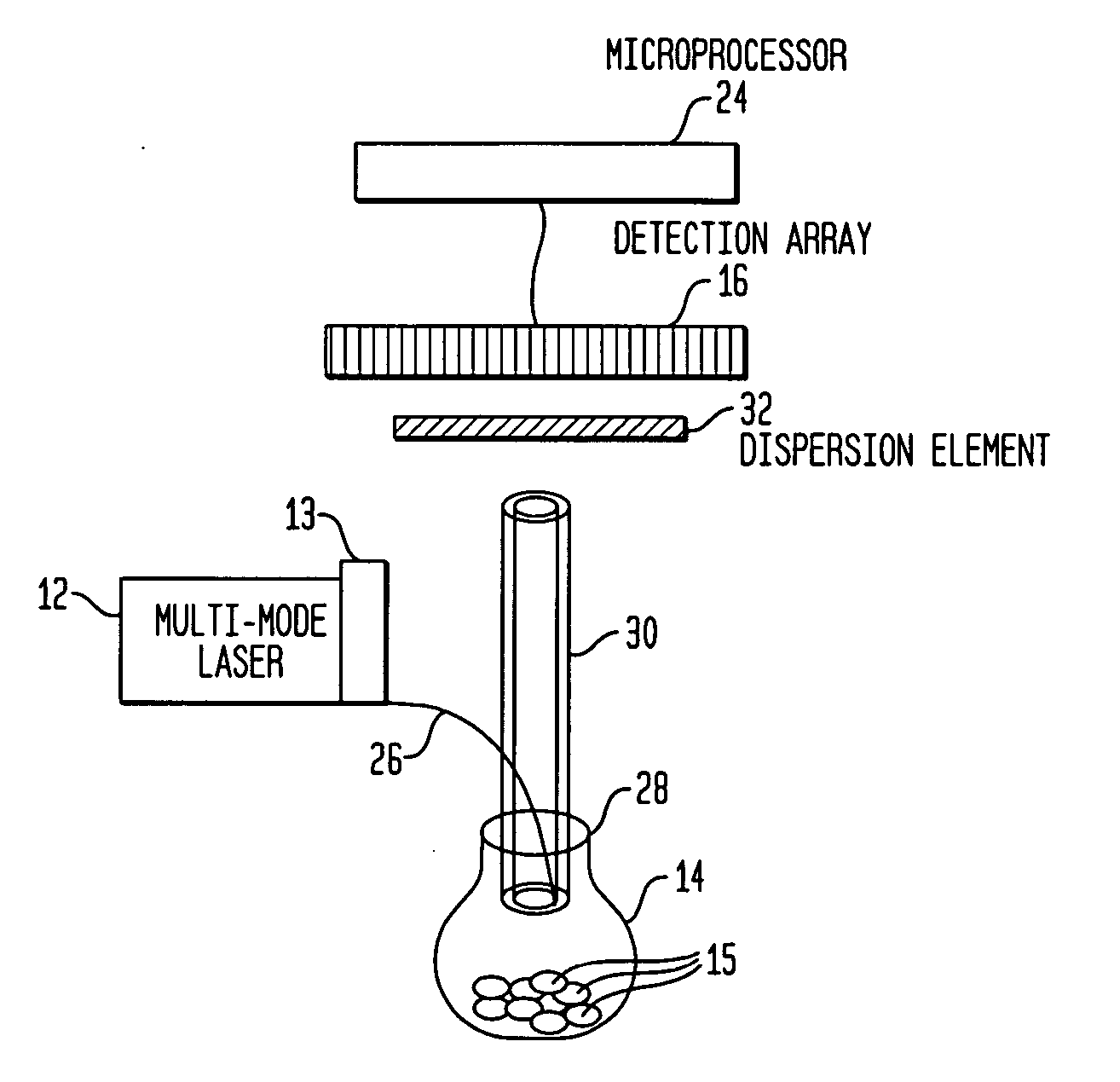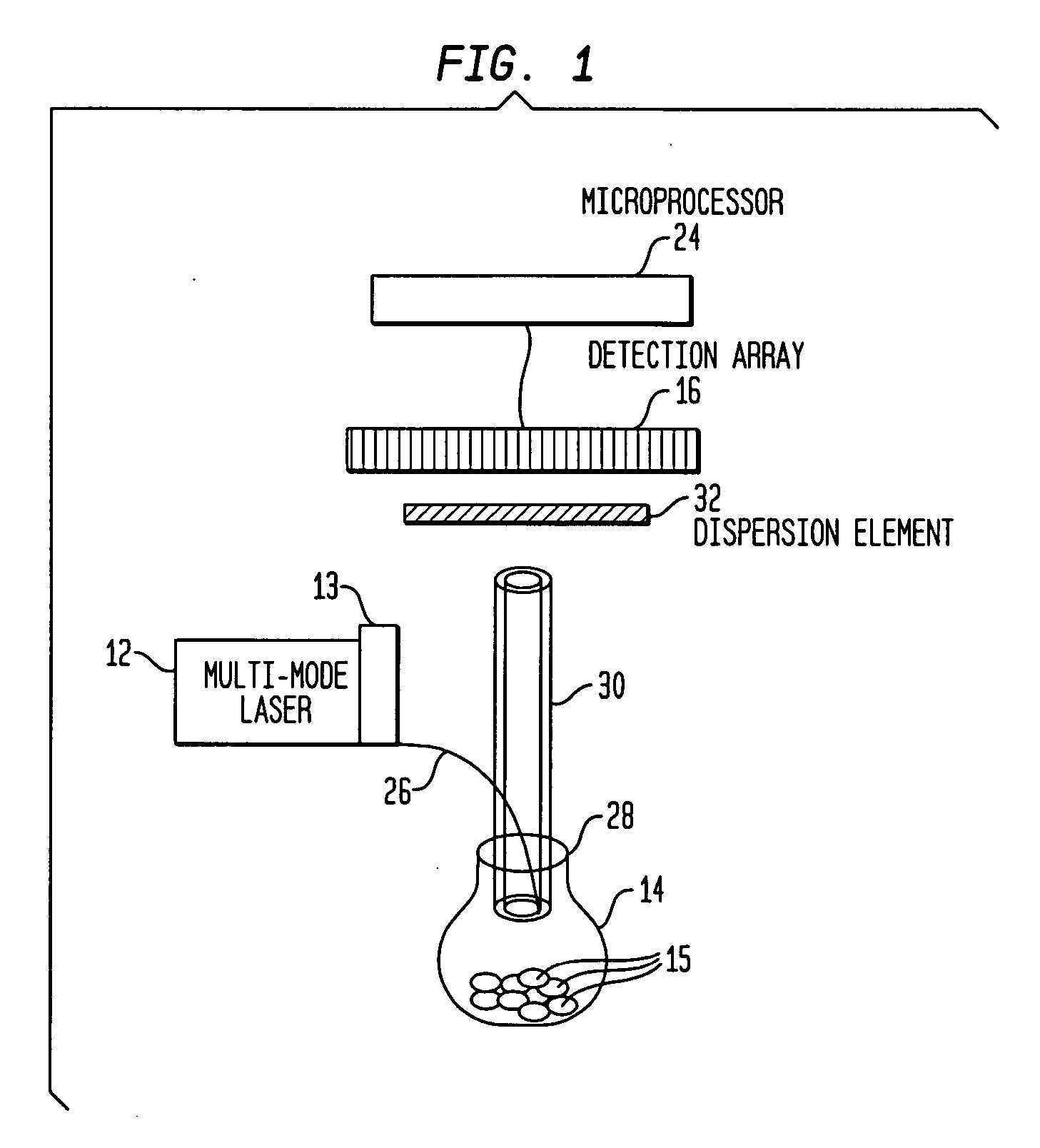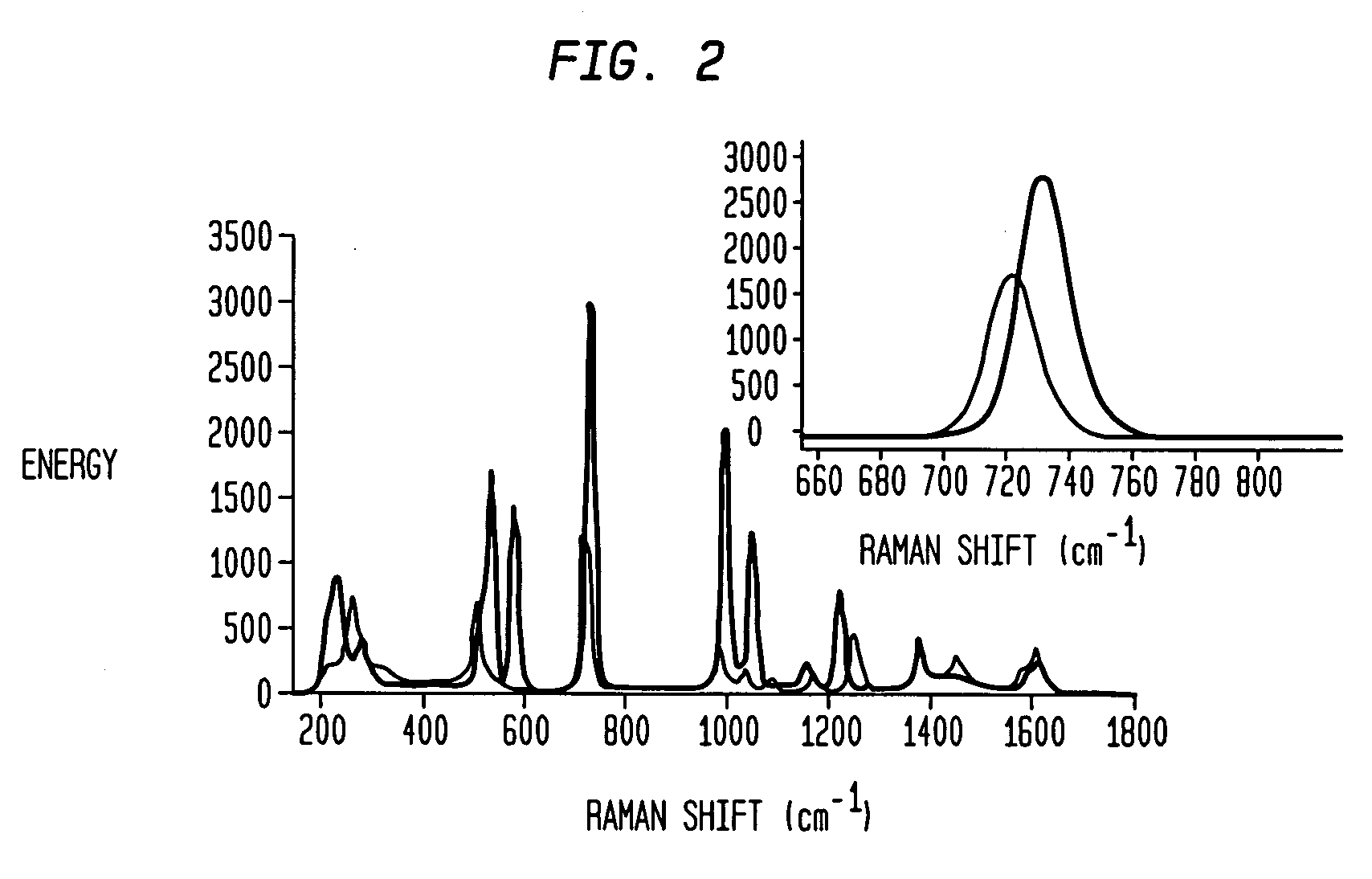Raman spectroscopy with stabilized multi-mode lasers
a multi-mode laser and spectroscopy technology, applied in the field oframan spectroscopy, can solve the problems of laser remains one of the major expenses, the expense of raman spectroscopy relative to the mid and near infrared system, etc., and achieves the effects of reducing mode hopping, high resolution, and inexpensive determination of constituents
- Summary
- Abstract
- Description
- Claims
- Application Information
AI Technical Summary
Benefits of technology
Problems solved by technology
Method used
Image
Examples
Embodiment Construction
[0023] The terms “radiation”, “laser” and “light” are herein utilized interchangeably. In particular, these terms can refer to radiation having wavelength components that lie in the visible range of the electromagnetic spectrum, or outside the visible range, e.g., the infrared or ultraviolet range of the electromagnetic spectrum. In certain embodiments of Raman spectroscopy, the preferred excitation wavelengths will range from about 700 nanometers to 2.5 micrometers.
[0024] One embodiment of the Raman spectroscopy system 10 disclosed herein includes a multi-mode laser source connected to a spectral filter. The spectral filter narrows the wavelength range of the radiation delivered to a sample and ultimately improves the resolution and stability of Raman spectroscopy measurements made with the system. System 10 is schematically illustrated in FIG. 1, including multi-mode radiation source 12, spectral filter 13, and an excitation optical fiber 26 that carries the laser light to a samp...
PUM
 Login to View More
Login to View More Abstract
Description
Claims
Application Information
 Login to View More
Login to View More - R&D
- Intellectual Property
- Life Sciences
- Materials
- Tech Scout
- Unparalleled Data Quality
- Higher Quality Content
- 60% Fewer Hallucinations
Browse by: Latest US Patents, China's latest patents, Technical Efficacy Thesaurus, Application Domain, Technology Topic, Popular Technical Reports.
© 2025 PatSnap. All rights reserved.Legal|Privacy policy|Modern Slavery Act Transparency Statement|Sitemap|About US| Contact US: help@patsnap.com



